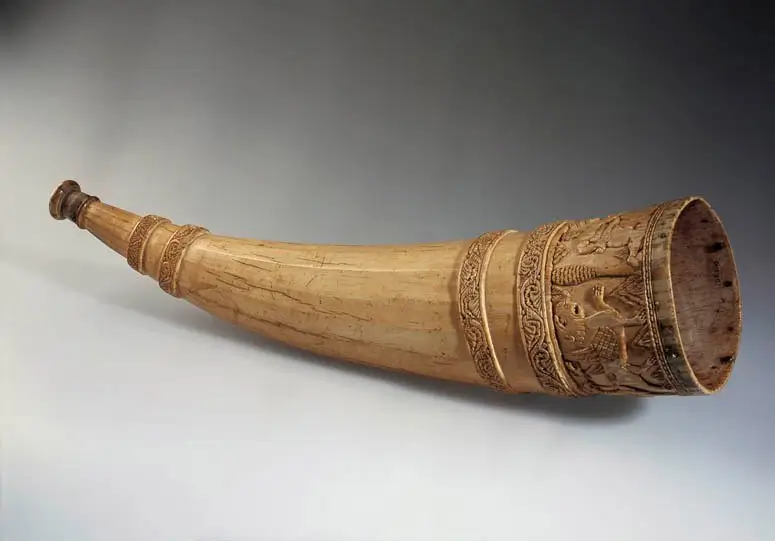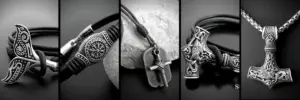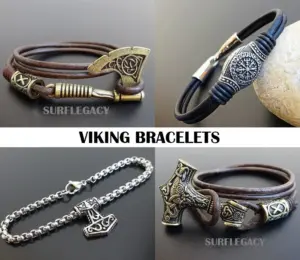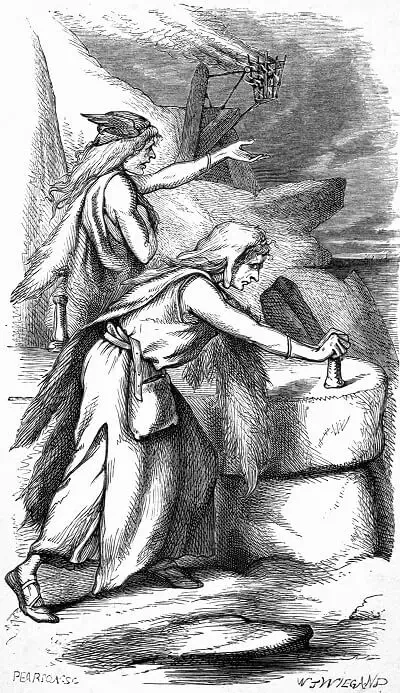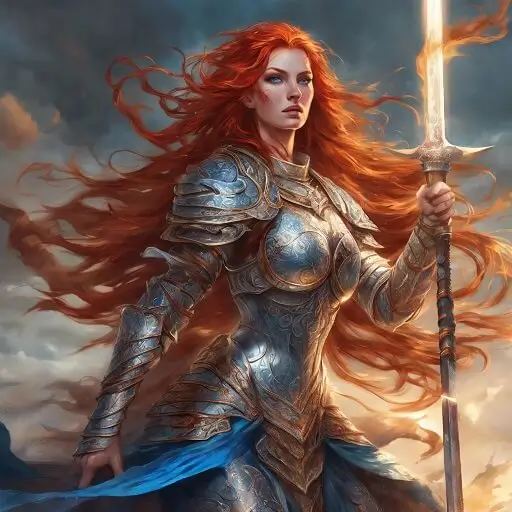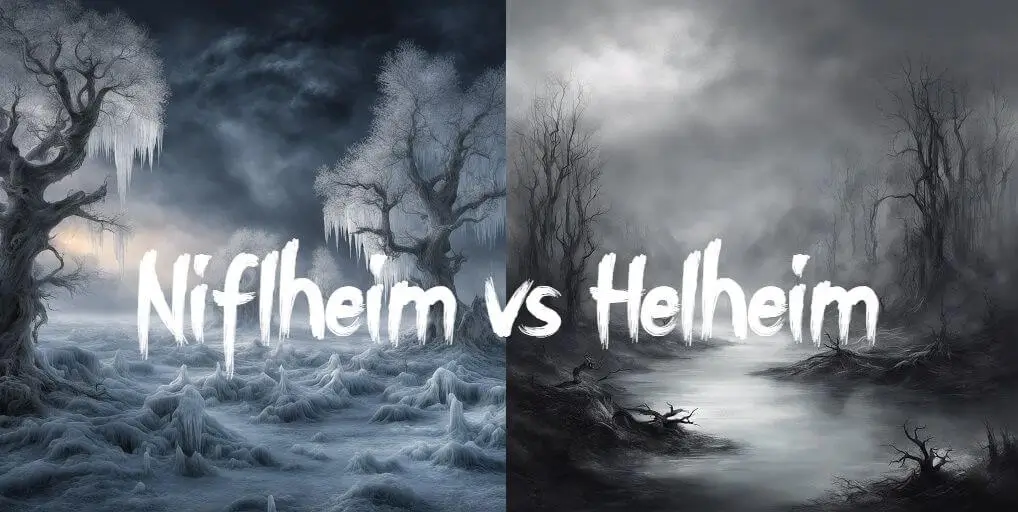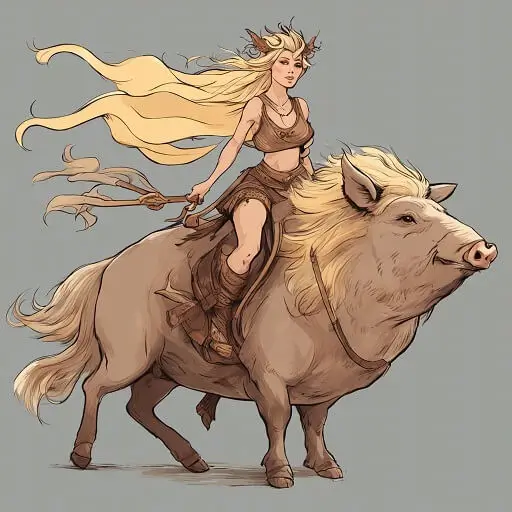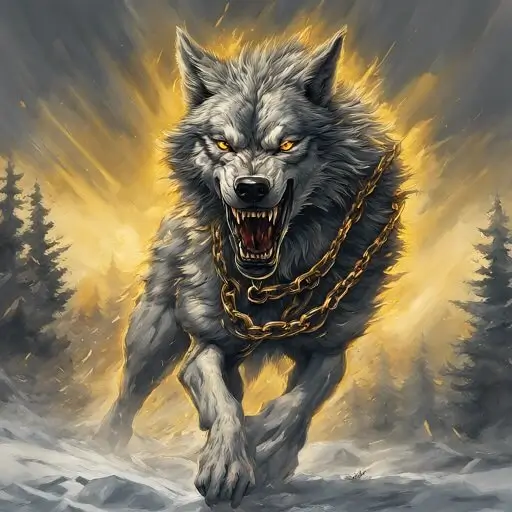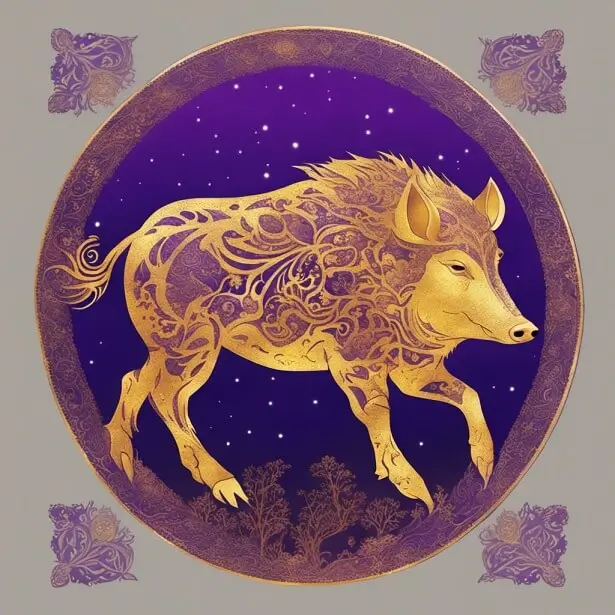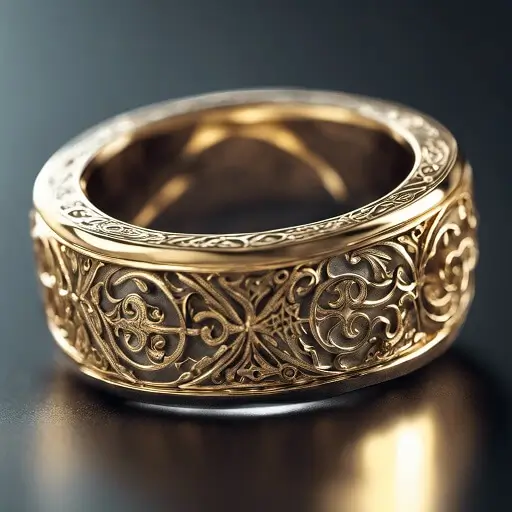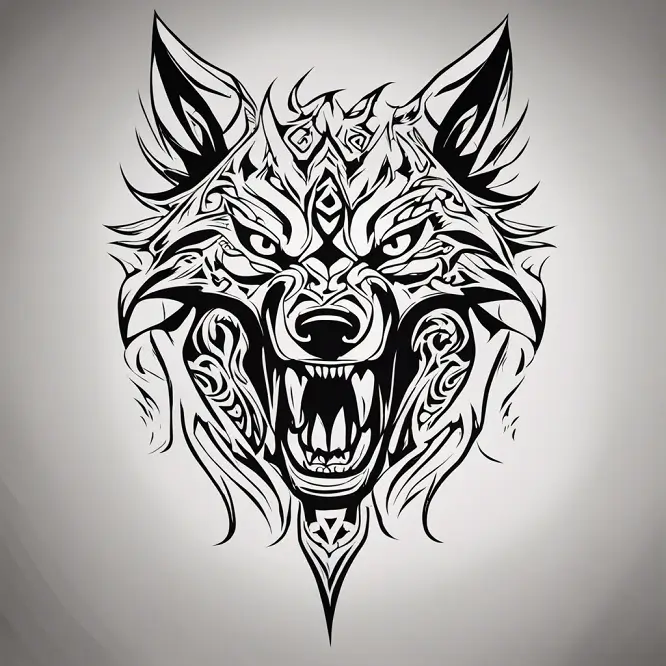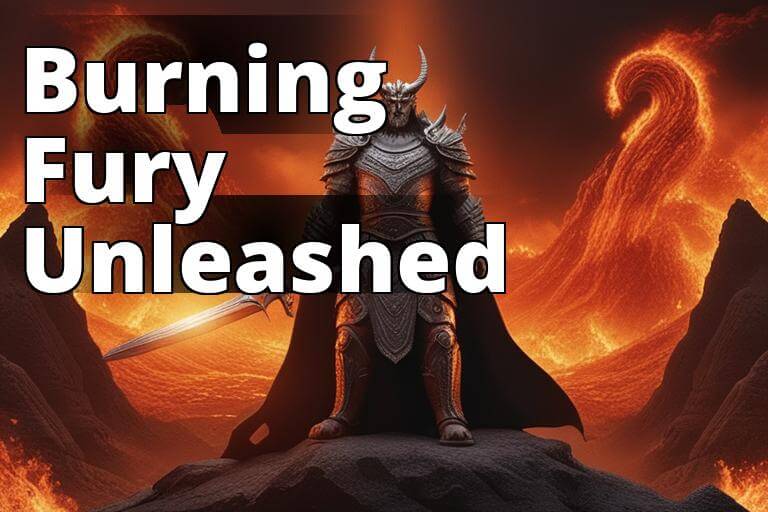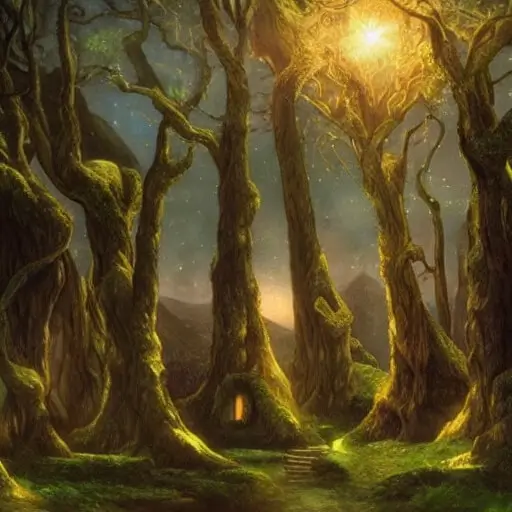In the fascinating world of Norse mythology, few artifacts stand out like the legendary Gjallarhorn. This ancient horn carries immense symbolic power and has a prominent role in Norse legends. Gjallarhorn’s origins, mythological significance, associated abilities, and connection to Ragnarok have contributed to its enduring popularity and mystique.
Key Facts About Gjallarhorn
Here are some key facts about the mythical Gjallarhorn:
- Also known as: The Yelling Horn, Heimdallr’s Horn
- Created by: The dwarves Brokkr and Eitri
- Associated Gods: Heimdallr, Odin
- Key Powers: Producing incredibly loud, far-reaching blasts; shaking earth and seas; amplifying senses
- Purpose: Signaling events, warning of dangers, initiating Ragnarok
- Appears in: Multiple Norse myths, most pivotally as a herald of Ragnarok
What is Gjallarhorn?
Gjallarhorn (Old Norse for “yelling horn” or “the loud sounding horn”) is a mystical horn from Norse mythology. It is closely associated with the gods Heimdallr and Odin. The horn has the power to produce incredibly loud blasts that can be heard throughout the Nine Worlds.
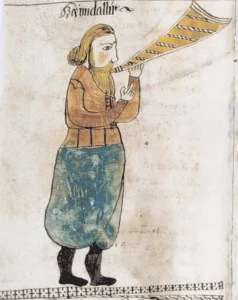
Heimdall in the Edda Oblongata
Gjallarhorn serves as a crucial tool for signaling important events and warning of impending dangers. Its most well-known purpose is announcing the arrival of Ragnarok, the apocalyptic battle that leads to the death of the gods and the end of the world in Norse mythology.
Overview of Norse Mythology
To understand Gjallarhorn, it helps to have context on Norse mythology. These legends originated in ancient Scandinavia and Germanic regions.
The Norse pantheon includes two main groups of gods – the Aesir and the Vanir. Key gods include the Allfather Odin, thunder god Thor, mischief-maker Loki, and Heimdall the sentinel guardian.
The Nine Worlds of Norse mythology connect the different realms, including Asgard (home of the Aesir), Midgard (the human world), and Jotunheim (the world of giants).
Norse myths involve gods, giants, dwarves, and other beings interacting and contesting for power. The legends include stories of creation, magical artifacts, journeys, and prophecies of Ragnarok – the cataclysmic end of the world.
Gjallarhorn factors heavily into this mythological backdrop as a godly relic of great power.
The Origins and Creation of Gjallarhorn
In Norse legend, Gjallarhorn was forged by the expert dwarven blacksmiths Brokkr and Eitri, said to be the most skilled craftsmen among the dwarves.
Its creation story begins when the mischief-loving god Loki cuts off the golden hair of the goddess Sif as a prank. To make amends, Loki commissions Brokkr and Eitri to replace it with hair made of actual gold, which they accomplish masterfully.
The dwarves then proceed to create several more legendary treasures for the gods – the spear Gungnir for Odin, the ship Skidbladnir for Freyr, and the hammer Mjolnir for Thor.
Loki becomes jealous of the dwarves’ skills and wagers that they cannot craft anything finer than those treasures. Brokkr and Eitri accept the bet and forge Gjallarhorn out of ornate golden metal.
When blown, the horn’s sound resonates deafeningly across all the Nine Worlds. Its power makes even the boastful Loki stand humbled.
While Mjolnir ultimately proves greater in a test against Loki’s items, Gjallarhorn is still considered one of the most impressive creations of Brokkr and Eitri. Its forging cements it as a divine instrument worthy of the Norse gods.
The Significance and Symbolism of Gjallarhorn
Gjallarhorn carries deeper meaning in Norse mythology beyond its practical uses. It takes on larger-than-life symbolic significance through its mythic associations.
Most pivotally, the horn is a key attribute of Heimdallr in his role as the vigilant sentinel guarding the bridge to Asgard. Heimdallr is known for his extraordinarily keen senses and watchfulness.
Gjallarhorn functions as his instrument for warning the other gods of any impending dangers or intrusions, amplifying his already formidable sensory capabilities.
Thus, Heimdallr’s possession of Gjallarhorn is a symbol of his duty to stand sentinel and herald any crises or threats to the gods. The horn represents vigilance and preparedness.
The thundering blasts of Gjallarhorn also take on symbolic meaning. Its reality-shaking sound is a projection of divine power and authority across all the Nine Worlds. The gods make their formidable presence felt wherever Gjallarhorn is sounded.
In a deeper sense, Gjallarhorn may also represent Odin’s eternal quest for wisdom. Odin went through multiple ordeals and sacrifices to obtain knowledge, including giving up an eye to drink from the Well of Wisdom.
Some myths suggest the blowing of Gjallarhorn inspired Odin’s search for universal understanding. So the horn embodies the pursuit of insight at any cost.
The Powers and Abilities of Gjallarhorn
In Norse mythology, Gjallarhorn is no mundane horn but an instrument imbued with divine powers:
- It produces deafeningly loud and far-reaching blasts that resound throughout the Nine Worlds. Any being across multiple realms can hear its reality-shaking sound.
- Its notes are powerful enough to stir up the seas and cause the very earth to tremble and fractured. Myths describe tsunamis and earthquakes resulting from Gjallarhorn’s blows.
- It can instantly mobilize and rally allies to action. Heroes and warriors like the legendary Einherjar are summoned and spurred to battle by Gjallarhorn’s cries.
- Gjallarhorn amplifies Heimdallr’s already extraordinary sensory capabilities to even greater heights. It allows him to detect threats no matter how distant.
- Its sound disorients and intimidates foes. For instance, Thor used it to scare off the giant Hymir while fishing for the Midgard Serpent.
- In some accounts, Gjallarhorn is used as a weapon itself due to its divine craftsmanship and pure metallic form.
Thanks to these remarkable powers, Gjallarhorn serves as both a communication tool and a formidable multipurpose weapon for the Norse gods.
Powers and Abilities of Gjallarhorn
| Power/Ability | Description |
|---|---|
| Reality-shaking blast | Produces extremely loud, far-reaching notes |
| Stirring seas/earth | Sound can cause tsunamis and earthquakes |
| Mobilizing allies | Calls warriors to battle across realms |
| Sensory amplification | Boosts Heimdallr’s already sharp senses |
| Intimidating enemies | Disorients foes like giants |
| Divine weapon | Used as a weapon itself in some accounts |
| Communication | Allows communication across vast distances |
Prominent Appearances in Norse Myths
Gjallarhorn makes notable appearances across several seminal Norse legends:
- In the myth of The Binding of Fenrir, the monstrous wolf Fenrir is alarmed by the resonance of Gjallarhorn as the gods bind him, confirming the horn’s far reach.

- It plays a key role in the story of Skírnismál where Freyr blows Gjallarhorn to summon the giant boar Gullinbursti to assist him in battle.
- In the myth detailing the rivalry between Heimdallr and Loki, Loki steals Gjallarhorn and temporarily hides it away to prevent Heimdallr from using it to announce Ragnarok.
- When Thor and Tyr travel to the hall of the giant Hymir to retrieve a giant cauldron, Thor uses Gjallarhorn’s blasts to frighten Hymir’s oxen and send them toppling over a cliffside.
- The thundering blowing of Gjallarhorn is said to have inspired the god Odin to sacrifice himself to obtain the cosmic wisdom of the ancient runes.
These examples demonstrate how Gjallarhorn frequently appeared during pivotal events in Norse myths.
The horn’s interventions emphasize its importance and power.
The Prose Edda provides more details on Gjallarhorn and its mythological significance:
- It states that one of the roots of Yggdrasil reaches to the well Mímisbrunnr, which contains much wisdom. Heimdallr drinks from this well using Gjallarhorn, making him wise.
- It also mentions that Heimdallr owns Gjallarhorn, whose blast can be heard in all worlds.
- At Ragnarök, Heimdallr will blow into Gjallarhorn mightily to awaken the gods and alert them to gather for battle.
These Prose Edda references further demonstrate Gjallarhorn’s mythical importance as a horn imbued with power to impart wisdom and signal momentous events.
Gjallarhorn and Ragnarok
Nowhere does Gjallarhorn feature more prominently than in its fated role in Ragnarok, the apocalyptic events that bring about the end of the world in Norse mythology.
The Ragnarok prophecies state that a great war will erupt between the gods and their enemies, unleashing tremendous chaos and destruction:
- It will begin after three years of devastating Fimbulwinter, with all bonds and fetters coming undone.
- The fire giant Surt will lead the forces of Muspell across the Bifrost bridge to invasion, causing it to break apart beneath their weight.
- Heimdallr, ever-watchful guardian of the rainbow bridge to Asgard, will see the advancing hordes from his post at the bridge entrance.
- Knowing Ragnarok has come, Heimdallr will sound a long, booming blast on the Gjallarhorn to signal the arrival of the apocalypse across all realms.
- Gods, giants, monsters, and heroes will join in an epic final battle, the Allfather Odin will be consumed by Fenrir, and the world will sink into the sea.
- The earth will be engulfed in flames before arising renewed. Gjallarhorn’s notes herald the twilight of the old gods and dawn of the new world.
Heimdallr’s sounding of Gjallarhorn is thus prophesized to mark the official start of Ragnarok – the all-encompassing war that culminates with the death of the gods and destruction of the known realms.
The moment Heimdallr blows Gjallarhorn, Ragnarok will be unleashed in full force. In this way, Gjallarhorn serves as an instrument of doom and cosmic change in Norse legends.
The Deeper Meaning of Gjallarhorn
While practically used as a horn, Gjallarhorn has multiple layers of symbolism rooted in Norse culture and values:
- It embodies the concept of eternal vigilance and preparedness. Its owner Heimdallr never slept and constantly watched for any signs of impending danger.
- The horn represents the Norse emphasis on fate and accepting one’s destiny. By sounding Gjallarhorn, Heimdallr signals the arrival of the foretold Ragnarok.
- Gjallarhorn is a symbol of action being preferable to inaction. Though it heralds doom, Heimdallr still chooses to actively sound the horn.
- It signifies the need to send out the warning call, even in the face of adversity. Heimdallr does not falter from his duty though it may mean his death.
- The horn evokes the transient nature of power and glory. The mightiest must eventually fall, as Gjallarhorn warns of even the gods’ twilight.
- It embodies the Norse concept of change being cyclical – destruction leading to rebirth. Ragnarok ushers in a new world and new life.
Through these layered meanings, Gjallarhorn represents the complex Norse mindset, cosmology, and view of divinity captured in mythic form.
Depictions in Norse Art
Though detailed descriptions of Gjallarhorn’s physical appearance are scarce, Norse artwork provides some visual depictions:
- Intricately decorated horns appear frequently in Norse art, jewelry, and carvings, likely representing Gjallarhorn and its status as a divine object.
- The 11th century Gosforth Cross in England depicts a warrior figure carrying a horn and sword standing against two open-mouthed beasts, possibly depicting Heimdallr wielding Gjallarhorn.
- A Viking Age stone cross on the Isle of Man shows a warrior blowing a curled horn, which some scholars believe represents Heimdallr sounding the Gjallarhorn as an omen of Ragnarok.
- Golden horns like the ceremonial Gallehus horns contain similar Norse knotwork patterns and mythic iconography potentially inspired by legends of Gjallarhorn.
- Viking drinking horns and ceremonial horns are also theorized to be modeled after Gjallarhorn and its mythical role as a ritual object of the gods.
Though interpretations vary, these examples showcase how Gjallarhorn was envisioned in Norse art and culture.
Gjallarhorn in Today’s World
The legend of Gjallarhorn continues to capture modern imaginations and remains influential in contemporary pop culture:
- It has been depicted in comics, video games, movies, TV shows, literature, music, and art inspired by Norse mythology and Vikings, such as God of War, Vikings, Magnus Chase, and more.
- NASA and SpaceX have used the name Gjallarhorn for space vessels and rockets, linking it to cosmic journeys much like its role in Norse cosmology.
- Bands like Finland’s Gjallarhorn draw directly on the mythic horn for their name and incorporate Norse music, themes, and instruments.
- Neopagan groups inspired by Norse religion have adopted Gjallarhorn as an icon representing ancient Scandinavian heritage.
- Jewelry makers, craftsmen, and artists still produce renditions of Gjallarhorn due to its iconic visual appeal and historic mystique.
Clearly, the artifacts’s mythic legacy continues to capture modern imaginations across many realms of culture.
The Enduring Legacy of Gjallarhorn
Gjallarhorn stands out as an artifact of immense power and symbolic weight in Norse mythology. Its legacy and significance is visible in multiple aspects:
- It directly connects to key events in Norse mythology through its appearances across pivotal myths and role in Ragnarok.
- Gjallarhorn’s creation story involving the gods and master dwarven crafters gives it a sense of grand origin.
- Its reality-shaping abilities, from stirring oceans to amplifying Heimdallr’s senses, make it a unique force multiplier.
- The horn bears the dual importance of heralding wisdom and ruin – the quest for knowledge and fulfillment of apocalyptic destiny.
- Gjallarhorn symbolizes core Norse cultural values like vigilance, fate, bravery, and the cyclical nature of existence.
- The artifact’s memorable iconography and mythic aura contribute to its lasting popularity and reinterpretations.
In many ways, the story of the Norse gods is also the story of Gjallarhorn. Its outsized role in the cosmic events of myths secure its status as a uniquely important relic in the Norse pantheon.
FAQ About Gjallarhorn
What does the name Gjallarhorn mean?
In Old Norse, Gjallarhorn translates roughly to “loud yelling/resounding horn”, befitting its reality-shaking sound.
Where is Gjallarhorn kept?
The guardian god Heimdallr is said to be the watcher and wielder of Gjallarhorn at his fortress Himinbjorg near the entrance to Asgard.
What is Gjallarhorn made of?
Myths say it was forged out of ornate golden metal by Brokkr and Eitri to produce an incredibly loud sound.
Why is Gjallarhorn so loud?
Its divinely-forged construction from metallic materials allows it to produce otherworldly, far-reaching notes.
What does Gjallarhorn look like?
Details are scarce, but it is often visually depicted as a large curled metallic horn decorated with Norse ornamentation.
Who blows the Gjallarhorn?
The sentinel god Heimdallr is destined to sound the horn at the onset of Ragnarok. It may have other divine wielders.
Can anyone else blow Gjallarhorn?
In some accounts, gods like Odin and Thor have sounded the horn, but Heimdallr is its rightful master.
Why is Gjallarhorn blown?
Its main purpose is to alert the onset of major crises like Ragnarok. It is also used for communication, signaling events, and summoning.
Where did the legend of Gjallarhorn originate?
It emerged from ancient Norse religious stories passed down through poetry and sagas before being recorded in texts like the Prose Edda.
Is Gjallarhorn related to Odin?
While Heimdallr wields it, some links to Odin exist – inspiring his quest for wisdom, signaling the end of his reign, etc.
Does Gjallarhorn have powers?
Yes, it can produce deafening cosmic blasts, shake realms, amplify Heimdallr’s senses, rally troops to battle, and intimidate foes.
Will Gjallarhorn be blown?
According to myth, Heimdallr will blow it to herald Ragnarok, but the prophesized end times have not occurred in reality.
Where can I see Gjallarhorn today?
Its legend lives on through modern pop culture like TV, games, art, jewelry, literature, and more inspired by Norse mythology.
Conclusion
As one of the most impactful Norse mythological relics, Gjallarhorn has a rich legend behind it. The magical horn’s origins, powers, Ragnarok connections, and prominent role in Norse stories give it an air of destiny and mystique.
Gjallarhorn’s mythic legacy continues to capture imaginations today. Its indelible link to Ragnarok makes it the very symbol of the apocalypse in Norse legends. For all these reasons, Gjallarhorn remains a larger-than-life artifact destined to herald both wisdom and doom when its notes sound across the realms.
Shop Norse Jewelry
Are passionate about Norse Mythology?
Finding the ideal piece of Norse Jewelry can be challenging and time-consuming, especially if you lack inspiration or don’t know where to look.
Surflegacy, has you covered. We have a wide range of Handmade Jewelry in various styles, shapes, colors, and materials, to accentuate your Norse spirit and look. Do not hesitate to visit our selection HERE
Whatever you wear, you’ll find the ideal trendy piece to complement your wardrobe. Our jewelry is designed to be worn every day, no matter where you go or what season is. Are you ready to step up your wardrobe game?

